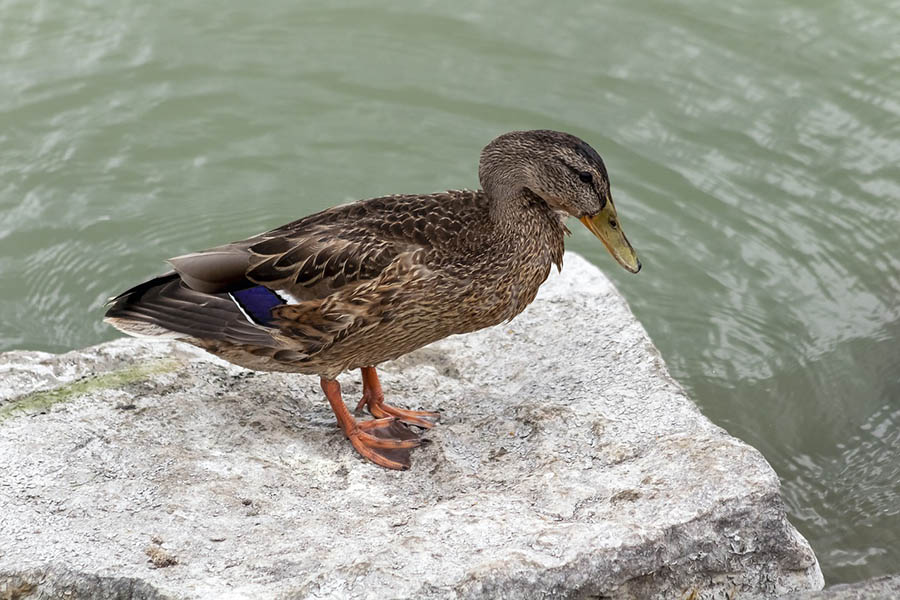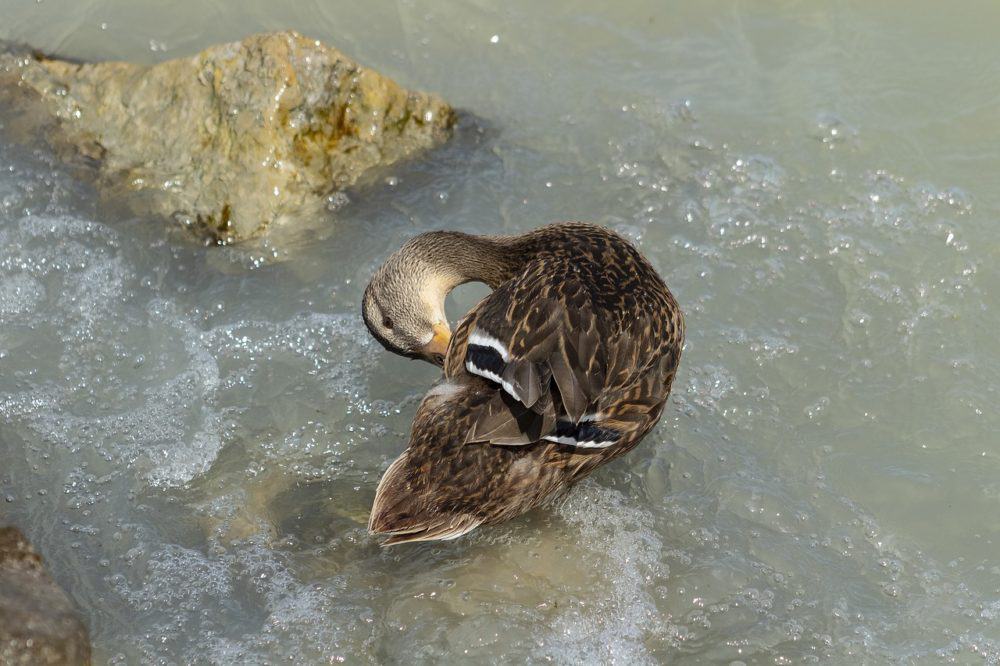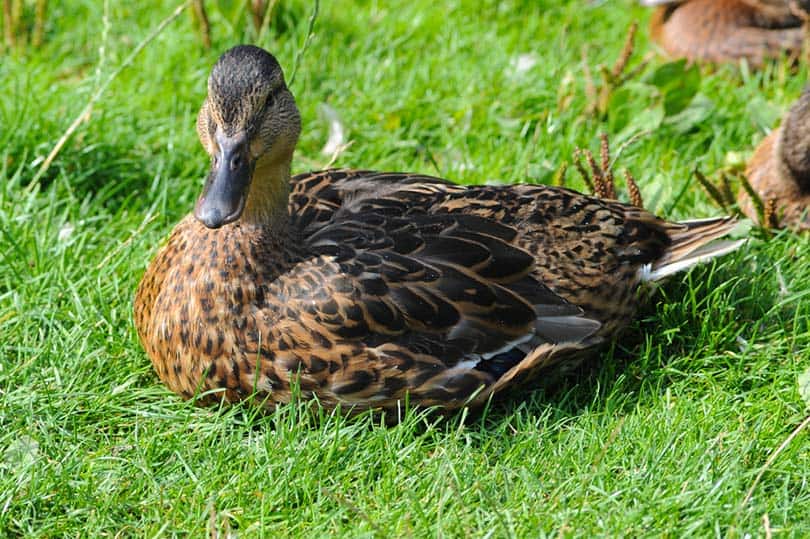Although not a prolific layer, the Rouen Duck is raised for its meat as well as for showing and as a pet. The bird is considered docile and easy to rear, and their size means that they are not the best at flying. They look and act similarly to the Mallard, which means that they don’t make a lot of noise or cause much fuss. The biggest effort involved in raising this breed will be ensuring that they have a secure enclosure that is safe from predators.

Quick Facts About Rouen Ducks
| Breed Name: | Rouen |
| Place of Origin: | France |
| Uses: | Meat, Exhibition, Pet |
| Drake (Male) Size: | 9–10 pounds |
| Female Size: | 8–9 pounds |
| Color: | Brown, Orange, Black, Blue |
| Lifespan: | 8–12 years |
| Climate Tolerance: | Can Tolerate Most Climates |
| Care Level: | Easy |
| Production: | 125 eggs per year |
Rouen Duck Origins
First developed in the Rhone region of France, the Rouen as we know it today was first developed in England in around 1800. In England, breeders effectively doubled the size of the bird and gave it a larger body. The Rouen first came to the US in 1850, introduced by D.W. Lincoln in Massachusetts, and was accepted into the American Poultry Association Standard of Perfection in 1874.
The bird was initially raised as an all-purpose farm duck before becoming popular as show birds. They are now considered one of the most popular of the heavyweight duck breeds, reaching as much as 10 pounds in weight. However, production Rouen Ducks are slightly smaller and leaner, typically weighing around 8 pounds.


Rouen Duck Characteristics
The Rouen Duck is a heavyweight duck that can weigh up to 10 pounds. It has a large body and its back arches from the shoulders down to the tail.
The drake has black eyes, orange feet, and a yellow bill. Its upper neck and tail are green, its back and body are gray, while its head, neck, and tail are green. The female duck is brown with black patterning. It, too, has black eyes, and orange feet, but it has a brown bill.
Different color varieties have been bred, but these have not been officially recognized by the APA. Overall, the Rouen looks very similar to the Drake, although it is much larger in size and build.
The bird is docile and easy-going, although it can become riled if it feels threatened or if it believes its eggs or young are in danger.
The Rouen is also a quiet bird and, as long as it is kept safe and secure, it is considered an easy duck to care for, making it a good choice for inexperienced keepers, those looking for easy pets, and for farmers that have kept mallards in the past.
Uses
The most common use for Rouens is for their meat because, although some specific breeds can lay as many as 125 eggs a year, some may only lay as few as 50 a year.
What the breed lacks in egg production, it more than makes up for in meat yield, however. Although production Rouen are considered mature at 8 pounds, they can grow as big as 10 pounds, giving a lot of delicately flavored meat. The meat is considered a delicacy and is most often sold to restaurants. However, they do take longer than other meat birds to mature, so the extra meat does carry a premium.
The large size and distinct coloring of the breed also make them popular as a show breed, and their docile nature makes them a good choice for a backyard or pet duck.

Appearance & Varieties
Although different colored variants of the Rouen have been bred, they are not officially recognized. There are really only two varieties: the common and the standard.
- The common, or production, Rouen matures at 7–8 pounds. It is larger than the similar looking Mallard but not as large as the standard Rouen.
- The standard Rouen grows to 10 pounds and has a much larger and squarer-shaped body. While the common Rouen can produce 125–150 eggs a year, the standard usually only lays around 50–100 eggs in a yearly period.
Population
The Rouen duck is under some threat, most likely because they are not prolific layers. There are believed to be fewer than 10,000 of the birds around the world today, including less than 5,000 breeding examples in the US.


Are Rouen Ducks Good for Small-Scale Farming?
Rouen ducks are considered a good choice for small-scale farming. While even the most prolific laying example of this breed will not yield more than 150 eggs a year, they do give a lot of meat thanks to their large size. They are also easy to care for, considered docile birds, and are most often described as being majestic. They are also quiet, which makes them suitable for keeping in a backyard, as well as on a small-scale farm.
Rouen ducks originate from France, but it was in England where the duck was bred to its current heavyweight size. Today, they are most often bred for their meat production but can also be dual-purpose and are popular for showing. Docile and easy-going birds, the Rouen is a good bird for small-scale farming.
See also:
Featured Image Credit: SAVA86, Pixabay
